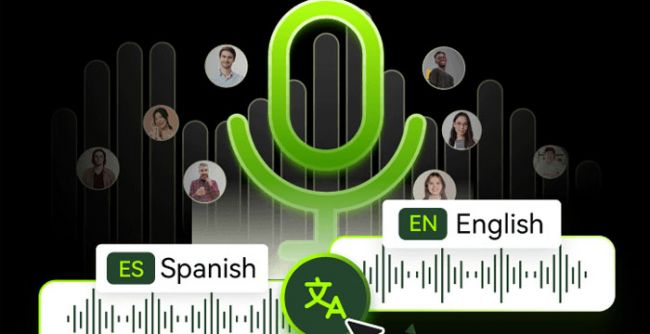Table of Content
In today's connected world, understanding different languages is more important than ever. Whether for work, school, or entertainment, being able to translate spoken content helps break language barriers.
Free audio translation tools make this easier by offering fast and affordable solutions. This blog will explain why these tools are useful, how they work, and the best free options available.
The Need for Audio Translation
Global Communication
As businesses, schools, and media reach international audiences, language barriers become a challenge. Audio translation helps people understand and communicate easily across different languages.
Specific Use Cases
- Education: Many students watch foreign-language lectures or online courses. Translation tools help them understand lessons better.
- Business: Companies deal with clients and partners from different countries. Audio translation helps in meetings, negotiations, and presentations.
- Entertainment: Watching foreign films or listening to podcasts in another language is easier with translation tools.
Top Free Tools for Translating Spanish to English Audio
In this section, we will explore some of the top free AI tools available for translating Spanish to English audio. We’ll delve into their technical capabilities, usability, and limitations.
1. Google Translate
- Overview: Google Translate is one of the most widely used translation tools in the world. While it is primarily known for text translation, it also offers audio translation features.

Key Features:
- Translates spoken Spanish into English in real-time.
- Uses speech recognition to detect and transcribe words.
- Available on Android, iOS, and web browsers.
Pros:
- Easy to use.
- Regular updates for better accuracy.
- Supports many languages.
Cons:
- May struggle with accents or slang.
- Requires internet for real-time translation.
- Limited options for specialized vocabulary.
How to Use:
- Open Google Translate on your phone or browser.
- Choose Spanish as the source language and English as the target language.
- Tap the microphone and speak in Spanish.
- The translated text will appear, and you can also listen to it.
2. Microsoft Translator
- Overview: Microsoft Translator is a robust translation tool that supports both text and audio translation. It is particularly well-regarded for its integration with Microsoft’s suite of products.

Key Features:
- Allows live translated conversations.
- Converts spoken Spanish into English text.
- Works offline when needed.
Pros:
- Highly accurate translations.
- Works with Microsoft Office and other apps.
- Supports over 60 languages.
Cons:
- Some features need a Microsoft account.
- The interface can be confusing for beginners.
- Real-time translation may have a slight delay.
How to Use:
- Download the Microsoft Translator app.
- Choose Spanish as the input language and English as the output.
- Tap the microphone and speak in Spanish.
- The translation will appear as text, and you can listen to it.
3. iTranslate
Overview: iTranslate is a popular translation app that offers both text and audio translation. It’s known for its user-friendly design and wide range of supported languages.

Key Features:
- Provides real-time voice translation.
- Has a phrasebook for common Spanish-English expressions.
- Automatically detects the language.
Pros:
- Easy to use.
- Works online and offline.
- Available on different devices, including smartwatches.
Cons:
- Free version has limited features.
- May not always get idiomatic expressions right.
- Full features require a paid subscription.
How to Use:
- Download the iTranslate app.
- Select Spanish as the input and English as the output language.
- Press the microphone and speak.
- The translation will appear on the screen, and you can play the audio.
Conclusion
AI-powered translation tools help break language barriers and make communication easier. While free tools have some limitations, they are useful for everyday needs. As technology improves, these tools will become even more accurate and helpful.
FAQs
FAQs
1. How accurate are free translation tools?
They are good for basic translations but may struggle with complex phrases, slang, or specialized vocabulary.
2. Can I use these tools for professional work?
Free tools are helpful for casual use, but professional fields like law or medicine may require expert translation services.
3. Are these tools safe to use?
Most tools require internet access and may store data temporarily. Always check privacy policies and avoid uploading sensitive information.
4. What if the audio quality is poor?
Low-quality audio affects translation accuracy. Try recording in a quiet place with a good microphone. Some tools have noise reduction features to improve clarity.
